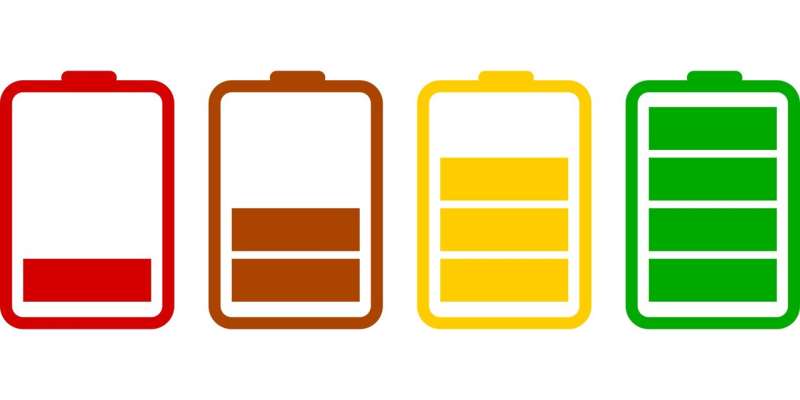Credit: CC0 Public Domain
Due to their large-scale energy storage, sodium ion batteries (SIBs) are a promising alternative to lithium-ion batteries (LIBs). However, it's challenging to develop high-energy and high-power SIBs due to the greater atomic mass and larger ionic radius.
Electrode architecture design with high mass loading of active materials is a more straightforward strategy to achieve high energy. It can increase the percentage of active materials and consequently energy density at device/cell levels.
Recently, a research group led by Prof. Li Xianfeng and Dr. Zheng Qiong from the Dalian Institute of Chemical Physics (DICP) of the Chinese Academy of Sciences (CAS) designed and optimized a low-tortuosity and high-areal-capacity cathode for high-rate and ultra-stable SIBs.
The results were published in Advanced Energy Materials on March 18.
The researchers proposed a low-tortuosity, finger-like composite electrode with ultra-high mass loading based on nonsolvent-induced phase separation method, which could offer well-pleasing electron/ion transport pathway and relatively low battery resistance.
Benefiting from the structural advantages, they obtained the as-prepared electrode with ultra-high mass loading (60 mg/cm2) and areal capacity (4.0 mAh/cm2). Even at a high rate of 10 C, the areal capacity remained 1.0 mAh/cm2.
The researchers also illustrated the homogeneous Na+ distribution, gentle and uniform local current density and polarization inside the as-prepared electrode.
Combining numerical simulations and experiments, they revealed that the low-tortuosity architecture could contribute to an impressive ion transport capability and consequently significant improvements in electrochemical performance.
This study exhibits a prospective solution for design and optimization of the low-tortuosity electrodes with ultra-high mass loading, which opens a new avenue for developing advanced SIBs with high energy/power density.
More information: Zhiqiang Lv et al. Controllable Design Coupled with Finite Element Analysis of Low‐Tortuosity Electrode Architecture for Advanced Sodium‐Ion Batteries with Ultra‐High Mass Loading, Advanced Energy Materials (2021). DOI: 10.1002/aenm.202003725
Journal information: Advanced Energy Materials
Provided by Chinese Academy of Sciences
























